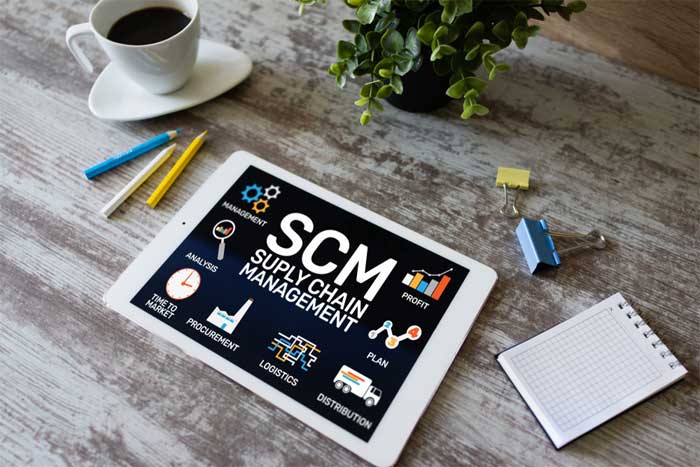It doesn’t matter what type of product or service a company is offering; there is always finance in supply chain management. Financial supply chain management (FSCM) isn’t just about looking at all of a business’s financial processes individually. The concept of financial supply chain management involves looking at all the financial functions of a business as a whole, from start to finish.
With FSCM, financial institutions assess the operation of the procedure to pay cycle, which is purchasing materials for the goods or service, working capital management, and the order to cash cycle.
Something many businesses struggle with is a way to align quality management with their supply chain. With the development of new technologies, achieving effective global supply chains isn’t as tricky as it was before. Understanding how a quality management system positively impacts the financial supply chain and implementing it with trading partners is critical for a business to succeed.
What is Financial Supply Chain

Financial supply chain management (FSCM) is the sum of individual processes that give you a single overview of a company’s finances. When practicing FSCM, you’ll examine, maintain, and seek out cost-saving methods for financial processes such as:
- Ordering
- Invoicing
- Payment
- Reconciliation
There are three branches of FSCM—procure-to-pay cycle, working capital management, and order-to-cash cycle. We’ll cover these in detail shortly.
Understanding the Link Between Finance and the Supply Chain

There’s a lot that goes into running a business, and especially as a company grows, it’s easy for the financial flow of a company to fall through the cracks. That can be a costly problem for your business because you may not have a system for actively identifying areas to reduce costs.
Furthermore, it’s natural for a business to hold off paying their suppliers until the last minute. That’s a common strategy that companies use because they want to put that capital to work.
However, paying suppliers in advance offers long-term benefits that many businesses overlook, including improved supplier relationships, discounts, and a possible quicker turnaround time for obtaining supplies.
Processes in the Financial Supply Chain

The financial flow in supply chain management involves three parts:
- Procure-to-pay cycle
- Order-to-cash cycle
- Working capital management
Furthermore, FSCM assesses your company’s departments and employees to look for ways to streamline work and understand how and when you use your capital. For example, company bonuses can temporarily skew profit margins, and a high-performing employee leaving your company may reduce your sales.
Procure-to-Pay Cycle
The procure-to-pay (P2P) cycle involves a company purchasing inventory or services in order to run its business. Several processes happen during this time, including:
- Selection of the items or services a company wants to purchase
- Receiving the agreed-upon items or services
- Paying for the items or services
Order-to-Cash Cycle
The order-to-cash (O2C) cycle is similar to P2P. However, it examines the process from the supplier’s point of view. Therefore, the O2C cycle begins when a supplier offers its initial quote. The cycle ends when they receive the full payment, reconciling the invoice.
When looking at O2C from a financial stance, the most important step is accounts receivable. At that time, it becomes the finance department’s responsibility to secure the payment in compliance with the extending payment terms.
Working Capital Management
Working capital is critical for any business to thrive, as it’s money you have set aside so you can continue purchasing goods and services while waiting for your clients to pay their outstanding invoices.
When analyzing supplier finance in supply chain management, managing supplies and invoices can be a tricky topic—businesses rely on their customer’s money to allow them to continue producing the product or service they sell.
However, without pre-purchasing enough inventory with working capital, you’ll end up spending more money than necessary manufacturing your product in smaller batches to reduce risk.
A company’s savings opportunity often comes down to developing working capital management skills. By doing so, you’ll gain the following benefits:
- Preventing supply shortages by balancing your assets and liabilities
- Having a cash flow reservoir for recurring company costs (such as utility bills and employee compensation)
- Ability to meet short-term debt payments
The better you handle working capital management, the more potential profit your company can gain. You won’t have to waste time hunting down spare cash or finance providers. Furthermore, your accounts receivable and accounts payable will remain balanced.
That said, proper working capital management also means drawing the line when you realize that you’ve invested too much of your company’s money in unused inventory.
The issue of insufficient working capital is often the greatest challenge faced by businesses. Ideas for freeing up working capital include:
- Negotiate discounts with your suppliers
- Ask your suppliers if they’ll offer less money for purchase orders (such as a discount on your invoice if you pay it within a certain amount of time)
- Encourage customers for early payment by offering discounts
- Charge your customers a fee for late payments
For the Ordering Party (The Buyer)

Supply chain finance can also involve support through a financial institution, which is a process called reverse factoring. In reverse factoring, you would work with a bank or a financial institution to pay your supplier’s invoices in a quicker turnaround time than you could manage on your own.
The advantage of doing so is that you’ll build trust with your supplier and might be able to negotiate a better deal with the parties involved at a lower cost. It also relieves some pressure from paying your supplier right away.
For the Factor (The Financier)

The factor, which is the financier in reverse factoring, is typically only willing to work with medium and large businesses, as they’ll gain more profits from fees.
The credit is typically short-term, and it helps improve liquidity between a business and its supplier. Often, a company waits to reconcile a supplier’s invoice until the last minute so that they have more free capital to work with. By involving a factor, they’ll simultaneously free up working capital and build a better relationship with their suppliers.
How FSCM Software Helps Companies Improve

No matter how experienced your finance team is, there’s always room to improve finance in supply chain management. However, a business has so many moving parts that it can be difficult for the human eye to detect opportunities to save money and increase profit. That’s where FSCM software comes into play.
By purchasing FSCM software for your business, you’ll boost its profit and productivity in the following ways:
- Automated identification of issues with the P2P and O2C cycles so that you can address them.
- Summary of outstanding invoices and their deadlines
- Overview of overall financial transactions, which will showcase cost-saving opportunities.
FSCM software is an excellent tool for helping you manage your business more effectively. However, it isn’t a replacement for your finance team. On the contrary, to use FSCM software effectively, it’s essential that you set company-wide procedures that will help keep your P2P and O2C cycles left unchanged.
By implementing FSCM software into your business plan, you’ll reduce errors and free up time. Furthermore, the software lets you keep your customers and your business accountable through open account trade management.
Invoice Management
FSCM software plays a key role in reducing the headache that can come from your finance department having to track down your customers or trading partners for missing payments. It also prevents your company from accidentally overlooking an overdue customer invoice.
The software works the opposite way as well; it’ll help you keep track of the payments you owe your suppliers at the same time so that you don’t lose money paying late fees and damage your reputation with them.
Supply chain finance management is a two-way street. The quicker you receive payments according to payment terms from your customers, the more money you’ll be able to reinvest in your company, thus increasing your potential sales revenue.
Similarly, the more efficient you pay your suppliers’ invoices, the more willing they’ll likely be to offer you discounts. They may also make your company a priority to send you products quicker than businesses they work with that don’t stay on top of reconciling their invoices.
Example of Supply Chain Finance

QFinance performed a case study on Microsoft regarding their desire to improve their financial supply chain. Although they already used some FSCM software, they wanted to specifically focus on the vendor side of supply chain finance management.
Because of the lengthy process that it took them to confirm foreign exchange settlements manually, FSCM offered them several benefits, including:
- Increased the transparency of real-time data with accounts receivable and payable
- Improved their control over cash flows while reducing their risk
- Completely eliminated manual processes like paper-based balance sheets involving intercompany and month-end bank account reconciliation
- Freed up their human resources from more tedious and recurring tasks
The final result ended up being that Microsoft lowered its foreign exchange settlement exception rates to under 5%. FSCM also allowed them to reduce the settlement process from four hours to less than 15 minutes. And, perhaps most impressive of all, at the same time they reduced their settlement errors to nearly 0%.
Wrap Up

It’s easy for items to fall through the cracks as a business grows. Unfortunately, this can create significant negative financial implications for your company because it causes you to miss out on discounts from your suppliers and profits from your customers.
By using FSCM software, your finance team won’t have to spend precious time manually managing invoices. Furthermore, the software will help you identify areas in the P2P and O2C cycles that will help you reduce your expenses and increase your profit. FSCM software is easy to incorporate into any business. So, why not give it a try and see for yourself how it can help your finances?